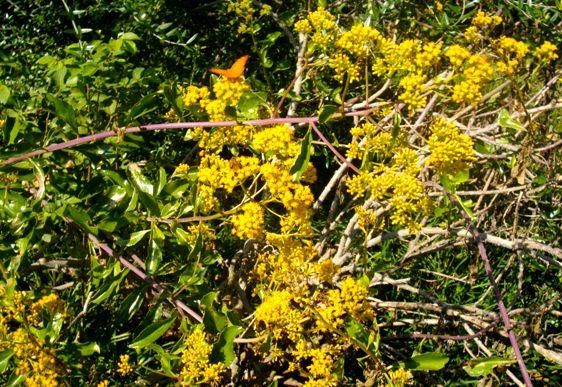Senecio pleistocephalus and butterfly

Pollination of Senecio pleistocephalus becomes more likely because of the long stems that grow vigorously to present these ample inflorescences to the sun. Thus the plant competes well with surrounding bush foliage for access to sunlight. Its reward is a multitude of eager insects servicing the flowers. The butterfly in action here had no difficulty in spotting the bright yellow disc flower daisies.
Is there really a significant honey scent from these flowers? People may not consider the scent of this Senecio as noteworthy, but human sensory capacity is irrelevant to pollination, whether people can smell it or not. Science may reveal whether a given pollinator species can detect a fragrance (and at what distance) through painstaking experimentation. Inventing a suitable design for answering such a question may provide sufficient challenge for making studies happen.
Discovering facts and putting them to profitable use are two separate tasks. Knowledge must be found before it can be applied, so science before technology. The search for knowledge is driven by curiosity; the technology for applying it by need, sometimes greed. Public funding drives science as well as technology for the benefit of society.
The search for knowledge into less functional issues is thus mostly privately funded. Not so easy to decide where the breakthrough will come though! Valuable results are sometimes stumbled upon serendipitously. Curiosity remains a driver of learning. Can it be taught? Maybe by example?
And it all starts with observation.

